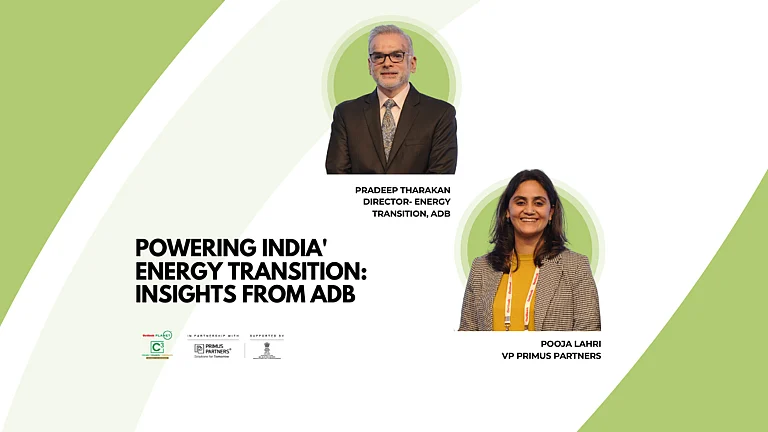As India embraces the green energy revolution, preparing a skilled workforce to meet the demands of this burgeoning sector is crucial. This story highlights the initiatives aimed at equipping workers with the necessary skills to thrive in a sustainable energy future.
How India’s Energy Goals Depend on Building a Future-Ready Skilled Workforce
India’s clean energy transition isn’t just about technology, it hinges on training the people who can power, maintain and scale it
India’s clean energy transformation is gathering pace, but even as wind turbines spin and solar panels multiply, a quieter, deeper shift is underway. It is not in hardware. It is in human capital. Behind every power line, storage system, or green corridor is a person making it work. A recent hiring trend confirms this shift.
According to the Foundit Insights Tracker, hiring for white-collar jobs in India increased by 32% year-over-year in January 2025, with a significant role played by green energy. Green jobs alone saw a 41% surge over the last two years. Roles linked to energy efficiency, grid optimisation, and sustainability strategy are becoming essential, not optional.
India’s energy sector is evolving from centralised generation to decentralised, digital, and flexible systems. As the country sets out to triple its non-fossil capacity by 2030, it’s clear that the energy transition won’t be powered by technology alone—it will need skilled people. Solar engineers. HVDC technicians. Battery storage operators. Energy auditors. These aren’t niche roles anymore, as they’re becoming mainstream. This requires a new kind of workforce: tech-savvy, cross-functional, and ready to learn at a rapid pace.
Cities like Bengaluru, Delhi, and Pune are emerging as the country’s green talent hubs. However, the supply of skilled professionals still lags behind demand.
Why Skilling Is No Longer a ‘CSR Activity’
Too often, skilling is treated as a secondary consideration or a token gesture of social responsibility. In the context of the energy transition, it is core business. Without the right talent, even well-funded projects stall. Wind farms face downtime. Transmission upgrades get delayed. New energy zones remain underutilised because there aren't enough personnel to build, run, and manage them.
The International Energy Agency (IEA) estimates that the world will need to add over 1.5 million skilled workers in transmission systems alone by 2030. India, with its scale and ambition, will need a large share of that talent. The need spans multiple roles: welders for towers, planners for grid design, analysts for energy markets, and coders for AI-powered monitoring systems. It’s a horizontal expansion of skill sets, not just a vertical one.
India’s Advantage Is That A Foundation Is Already in Place
India isn’t starting from scratch. According to the inaugural QS World Future Skills Index, India ranks 25th globally and is labelled a ‘future skills contender’. In the ‘future of work’ metric, it scores 99.1—just behind the United States, which tops the index. This recognition highlights the country’s early investments in digital technologies, AI, and industry-aligned education.
The foundations are solid. However, the focus must now shift from preparation to precision. To truly address the green skills gap, industry and education must collaborate, not operate in isolation.
Colleges and training centres must move beyond static curricula. They need inputs from power developers, OEMs, grid operators, and storage integrators. Real-world exposure, modular learning, and hands-on certification should become the norm, not the exception. Equally, companies need to invest in talent pipelines. This means paid apprenticeships, flexible entry-level roles, and support for the lateral movement of skilled workers across the energy value chain.
Skilling also needs to be made scalable. Short-term, job-ready courses can bridge the gap for workers from other sectors, such as construction, telecom, and IT, who are looking to enter the clean energy workforce. Many already have the core skills. What they need is contextual training.
A Workforce That’s Future-Ready Is Economy-Ready
A strong green workforce doesn’t just power energy projects. It powers the economy. As global supply chains shift, India has a shot at becoming not just a market for clean energy but a provider of clean energy solutions. Skilled professionals can help the country build, operate, and export renewable technologies, offering both jobs at home and growth abroad.
This also has a long-term social impact. Well-paying, skilled jobs in renewable energy can uplift communities, especially in states where traditional industrial employment is shrinking.
India’s green energy boom is real. But to sustain it, the country needs a million-strong, job-ready, future-proof workforce. This is not a challenge for tomorrow. It’s a call for action today. If India can align its people power with its energy goals, the results will not just be seen in plants and projects but in households, livelihoods, and global competitiveness.
Ultimately, the green transition isn’t just about switching energy sources.
It’s about building capabilities.
(The author is Group CHRO at Sterlite Electric Ltd, Resonia Ltd, Serentica Renewables. The views expressed in this article are personal and do not represent the opinions or positions of Outlook Business.)



